Projectgrit.fit © 2025 | All rights reserved
Insights and Articles
Read. Reflect. Rise. Power your progress with purpose.

Project grit
When Too Much Cardio Backfires: Risks of Extreme Endurance Training
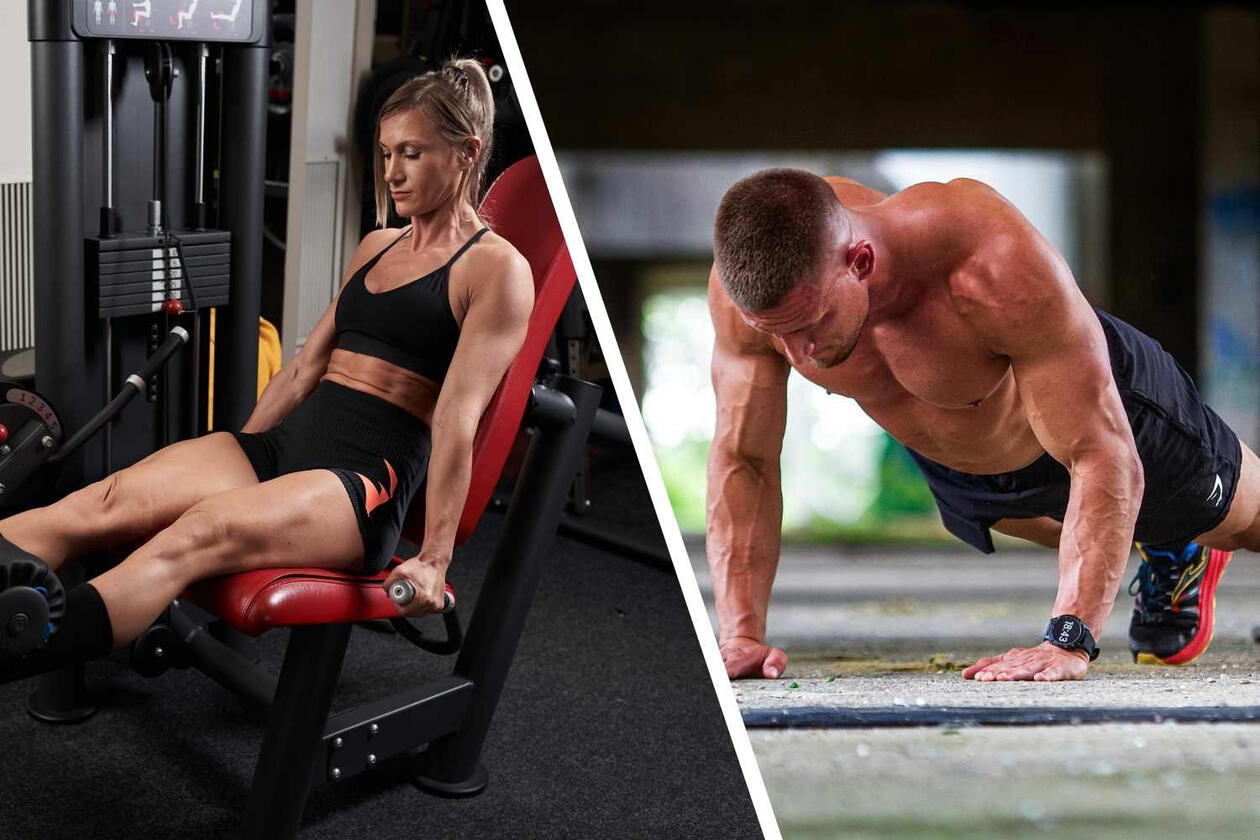
project grit
Understanding the Kinetic Chain and Its Role in Functional Fitness

Project Grit
Top 3 Postural Problems Caused by Sitting — and How to Fix Them

Project Grit
The Hidden Dangers of Sleep Deprivation: Why Quality Rest is Essential

project grit
Dark Chocolate & Heart Health: What Science Really Says

project grit
Why Eccentric-Overload Training Outperforms Traditional Strength Workouts

Project Grit
Should You Foam Roll Your Lower Back? What You Need to Know
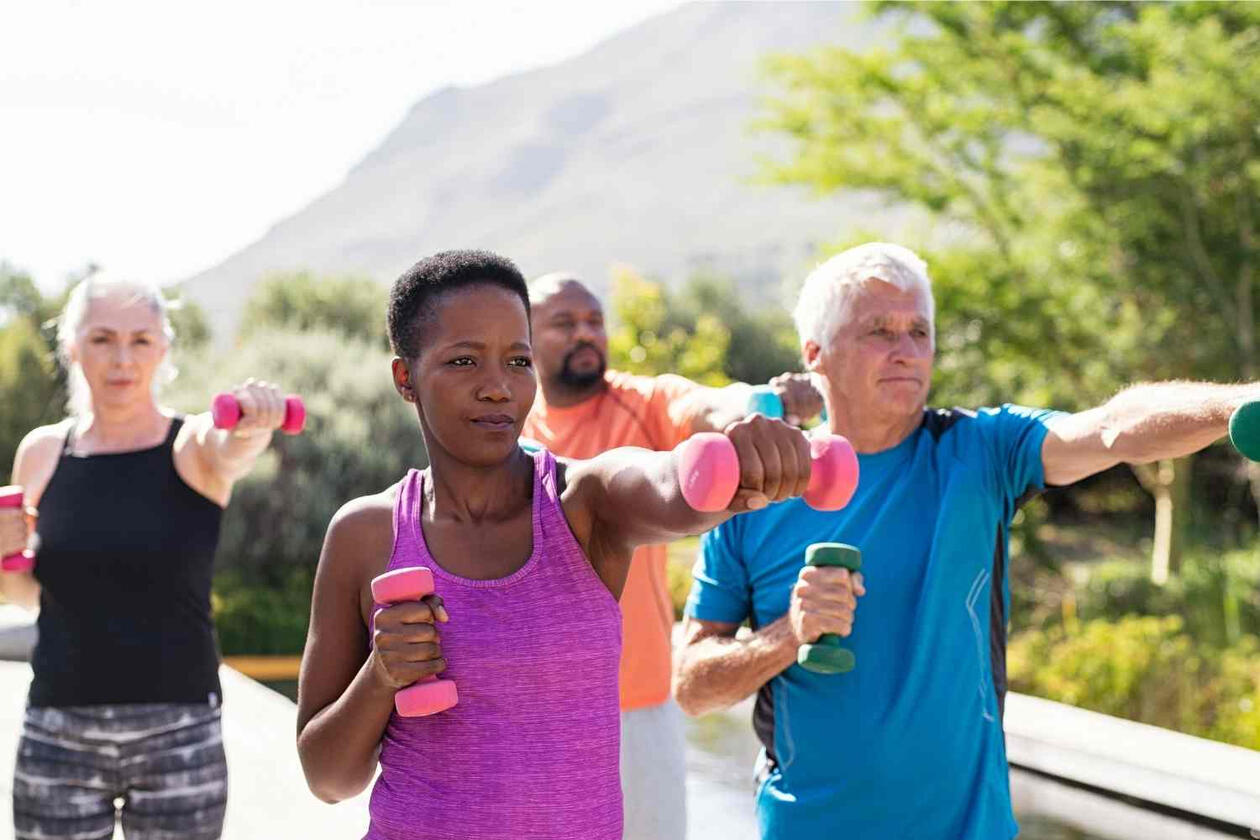
Project Grit
Strength & Power Training: A Game-Changer for Osteoarthritis Management

project grit
Caffeine and Exercise: Performance Benefits and Smart Use
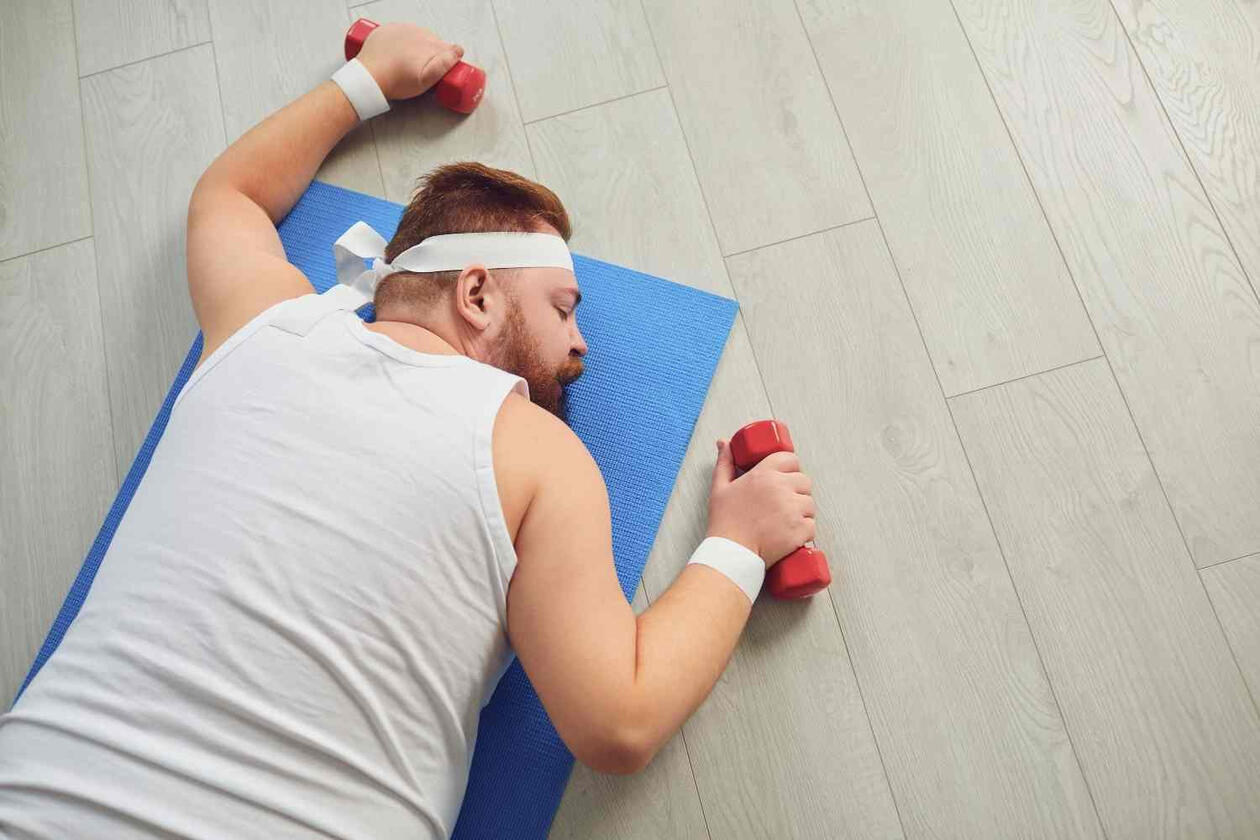
project grit
The Powerful Link Between Sleep and Exercise: What You Need to Know

project grit
Gluten-Free: Health Trend or Medical Must-Have?

project grit
Calcium: The Underrated Powerhouse Behind Strong Bones, Muscles, and More








Top 3 Postural Problems Caused by Sitting — and How to Fix Them

Spending long hours sitting — whether at a desk, in a car, or on the couch — may seem harmless, but it can take a serious toll on your posture. Over time, a sedentary lifestyle leads to muscular imbalances, poor movement mechanics, and even pain. Here's a breakdown of the three most common postural issues caused by sitting too much — and, more importantly, how to correct them through smart training and daily movement.
Lower Crossed Syndrome (LCS)
What it is:
Lower Crossed Syndrome occurs when there’s an imbalance between tight and weak muscles in the lower body. Typically, the hip flexors and lower back muscles get tight, while the glutes and abdominal muscles become weak. This results in anterior pelvic tilt — where your hips tilt forward — creating excessive arching in your lower back.
Why it happens:
Sitting for extended periods shortens the hip flexors and reduces glute activation. Combine that with poor core engagement, and the pelvis starts to tip out of alignment.
How to fix it:
The goal is to release the tight muscles and strengthen the weak ones.
• Stretch/Release: Focus on loosening the hip flexors, quads, and lower back. Foam rolling and static stretching work well.
• Strengthen: Build strength in your glutes and core. Think glute bridges, planks, bird dogs, and dead bugs.
• Posture Reset: Add hip mobility drills and pelvic tilt exercises to your warm-ups.
Upper Crossed Syndrome (UCS)
What it is:
Upper Crossed Syndrome is a common postural distortion that results in rounded shoulders, forward head posture, and elevated shoulder blades. It’s caused by a muscular imbalance in the upper body — typically, the chest and upper traps get tight, while the deep neck flexors, rhomboids, and lower traps are weak.
Why it happens:
Looking down at screens, slouching at desks, and using phones puts your upper body in a poor position for hours every day. This causes some muscles to overwork while others shut off.
How to fix it:
• Stretch/Release: Work on loosening the pecs and upper traps using foam rollers and static stretches.
• Strengthen: Retrain your mid-back and neck stabilizers. Prioritize rows, band pull-aparts, wall angels, and chin tucks.
• Movement Cues: Practice chin retraction and scapular control drills to improve postural awareness.
Rounded Shoulders and Kyphosis
What it is:
Rounded shoulders and kyphosis (excessive upper back curvature) are commonly seen together. They lead to poor posture, restricted breathing, and upper back or neck discomfort.
Why it happens:
This posture often results from slouching, weak upper back muscles, and a tight chest. It's closely linked with UCS but more focused on thoracic spine dysfunction.
How to fix it:
• Stretch/Release: Loosen tight chest muscles and work on thoracic mobility (use foam rollers across the upper back).
• Strengthen: Focus on posterior chain exercises — reverse flys, resistance band rows, face pulls, and scapular wall slides.
• Mobility Drills: Add thoracic extension and rotation work (like open books or cat-cow) to daily routines.
The Bottom Line
Sitting isn’t inherently bad — but sitting all day without movement is. The body adapts to what it does most often. If your day includes long hours at a desk or behind the wheel, you’re training your body into poor posture by default.
The fix? Regular movement, corrective exercise, and being mindful of your alignment. You don’t need to overhaul your entire life — just start by adding the right stretches, mobility work, and strength training into your routine. Small consistent steps lead to big posture wins.
*Based on resources from NASM and ACSM | For educational purposes only | Not affiliated with or endorsed by either organization.
Projectgrit.fit © 2025 | All rights reserved
Should You Foam Roll Your Lower Back? What You Need to Know
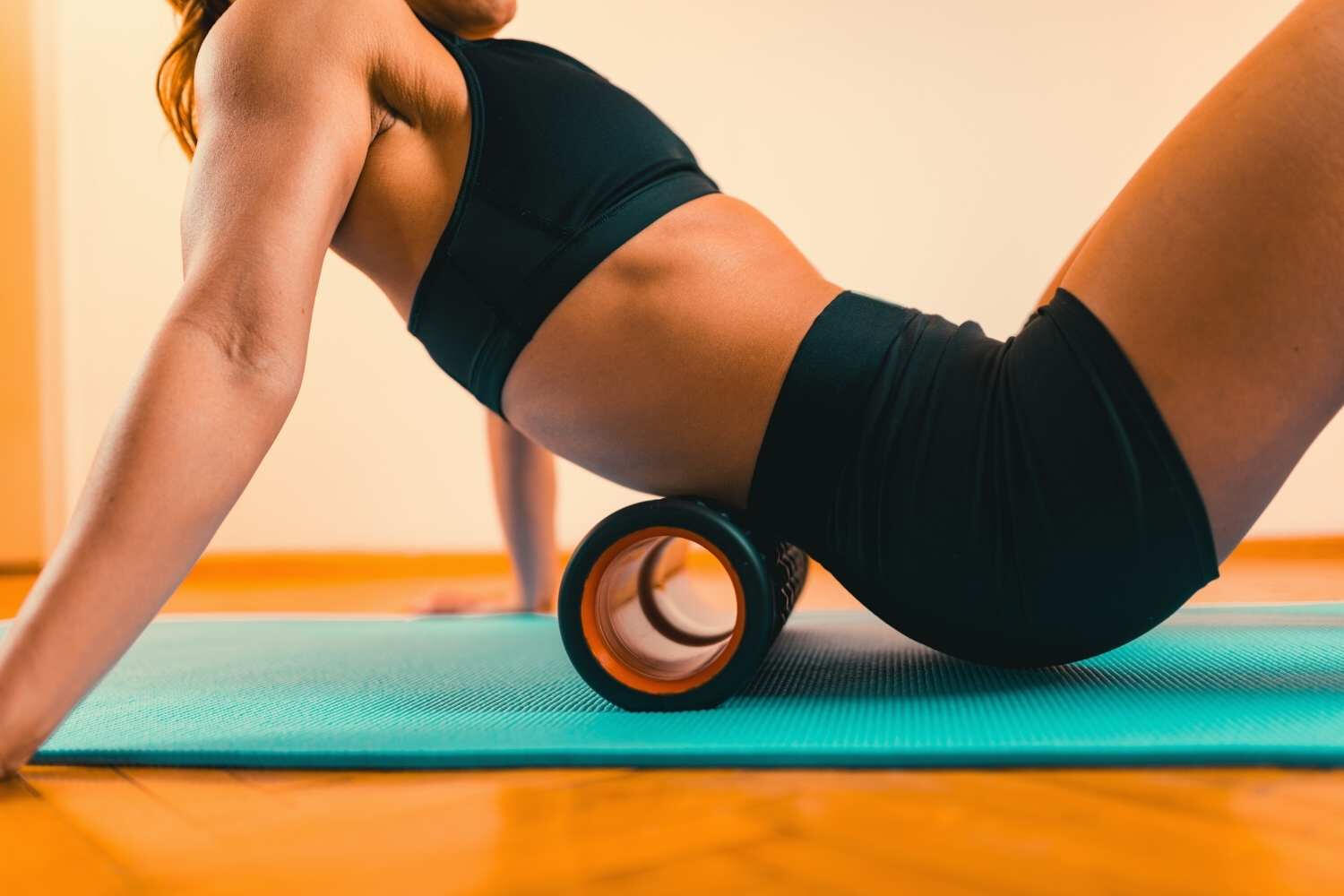
Foam rolling is one of the most popular recovery tools in fitness today. It’s widely used to release muscle tension, improve flexibility, and relieve post-workout soreness. But when it comes to the lower back, things get a bit tricky. In fact, it might not be such a good idea.
Let’s explore why foam rolling your lower back may do more harm than good—and what you should be doing instead.
The Problem With Foam Rolling the Low Back
Most people assume foam rolling works like a magic wand for any area that feels tight or painful. If your lower back hurts, just roll it out, right? Not quite.
The truth is, most cases of lower back pain aren't caused by the lower back itself. The discomfort you're feeling is often a compensation—your low back is working overtime because other muscles around it (like your hips or core) aren’t doing their job.
So when you apply direct pressure to the low back using a foam roller, you're not fixing the problem—you’re potentially making it worse.
What Causes Most Lower Back Pain?
Most cases of lower back discomfort are mechanical, meaning they come from muscle imbalances or movement dysfunction, not serious injury or disease. Common causes include:
• Sitting too long with poor posture
• Lifting with bad form
• Weak core or glute muscles
• Tight hip flexors
• Pelvic tilt issues
Instead of attacking the pain site (your low back), the smart move is to assess what’s pulling things out of alignment.
Why Rolling the Low Back is Risky
Here’s why foam rolling your lumbar spine isn’t a great idea:
1. There’s no bony protection
Unlike your chest (protected by ribs), your lower back covers sensitive organs like the kidneys and liver with little to no bone structure shielding them. Applying direct pressure here isn't just ineffective—it can be dangerous.
2. You may be making the problem worse
Foam rollers are generally about 5" in diameter. Laying your body weight across one pushes your spine into hyperextension (exaggerated arch). If your pain is due to poor posture or excessive spinal extension, foam rolling just reinforces the imbalance.
3. You can't isolate the right muscles effectively
Foam rolling works best when you can identify a specific tight muscle (trigger point) and hold pressure. That’s tough to do on the low back, where most of the tension is deep and surrounded by protective structures.
What You Should Do Instead
Instead of rolling directly on the lower back, focus on these smarter alternatives:
• Foam Roll the Right Areas
The pain in your low back may be caused by tight or overactive muscles in surrounding regions. Try foam rolling:
• Hip flexors (especially psoas and TFL)
• Glutes (including piriformis)
• Quads and hamstrings
• Calves
These areas, when tight, pull on the pelvis and contribute to low back stress.
• Strengthen the Core
A strong core stabilizes the spine and helps prevent low back issues. Incorporate exercises like:
• Dead bugs
• Planks
• Bird-dogs
• Glute bridges
• Improve Your Movement Patterns
Have a coach or trainer assess your movement with basic tests like an overhead squat. Watch for compensations like arching the lower back or knees caving in. These can point to weak or tight muscle groups that need attention.
• Use Targeted Tools, Not Full Rollers
If you’re determined to do self-release work near the lower back, use smaller, more precise tools like a massage ball, not a full-size foam roller. But even then, avoid placing pressure directly on the spine.
Safe Recovery for a Sore Low Back
Instead of rolling the lumbar area, try these safer approaches:
• Gentle yoga stretches (child’s pose, cat-cow)
• Heat therapy
• Massage from a licensed professional
• Walking to gently mobilize the hips and spine
• Posture training throughout the day
Final Thought
Foam rolling can be a powerful recovery tool—but it’s not a one-size-fits-all solution. When it comes to the lower back, rolling directly over it is not just ineffective—it may aggravate the problem. Focus on the surrounding muscles, fix movement patterns, and strengthen your core.
Pain in the low back is often a sign that something else needs attention. Don't just roll where it hurts—roll smart.
*Based on resources from NASM and ACSM | For educational purposes only | Not affiliated with or endorsed by either organization.
Projectgrit.fit © 2025 | All rights reserved
When Too Much Cardio Backfires: Risks of Extreme Endurance Training

We often celebrate endurance — marathons, long-distance rides, grueling triathlons. But more isn’t always better. For athletes and clients chasing peak aerobic performance, excessive training can quietly damage the body over time. From suppressed immunity to hormonal imbalances and energy depletion, overtraining the aerobic system can lead to more harm than gain.Let’s break down what happens when endurance goes too far — and how to build smart, sustainable training programs instead.
Immune Function Takes a Hit
Pushing through long sessions of intense cardio puts the immune system in a temporary suppressed state — often referred to as the “open window” phase. For anywhere from 3 to 72 hours post-exercise, the body becomes more vulnerable to illness and respiratory infections, especially if the athlete is already sleep-deprived, stressed, or undernourished.Training while carb-depleted further spikes stress hormones like cortisol, which worsens immune suppression. Combine that with back-to-back high-output sessions, and the body has less capacity to defend itself against common viruses and pathogens.
Energy Deficiency Impairs Performance and Health
Many endurance athletes, particularly long-distance runners, undereat without realizing it. Whether it’s due to body image pressure, performance strategies, or simply misjudging intake needs, the result is often low energy availability — not enough fuel to meet the demands of training and daily life.
This mismatch can disrupt:
• Hormone production
• Menstrual health
• Bone density
• Recovery and performance
Female athletes are especially at risk for what’s often called RED S (Relative Energy Deficiency in Sport) — a combination of energy imbalance, reproductive dysfunction, and skeletal issues that increase the likelihood of stress fractures and chronic fatigue.
Muscle Cramps During Long Events
Muscle cramps are one of the most common complaints in endurance sports. Though not fully understood, they’re believed to result from:
• Neuromuscular fatigue
• Electrolyte imbalances
• Prolonged high-intensity effort
Marathoners and triathletes often experience leg cramps late in events, likely from pushing beyond their neuromuscular thresholds — especially if underhydrated or underslept.
Sudden Post-Race Collapses: A Circulatory Concern
It’s not unusual to see an endurance athlete collapse shortly after crossing the finish line. Surprisingly, these collapses aren’t always due to exhaustion or dehydration. They’re often linked to low blood pressure (postural hypotension) caused by:
• Low peripheral vascular resistance
• Reduced heart rate
• Sudden stoppage of movement
After hours of running or cycling, the blood vessels remain dilated and the heart slows. Without movement to help pump blood back to the heart, blood pools in the legs, and the brain doesn't get enough oxygen — triggering dizziness or fainting.
Overtraining: When Recovery Gets Ignored
Even the most well-designed training plan fails without proper recovery and deloading. When cardio volume climbs too high without enough rest, signs of overtraining syndrome (OTS) begin to surface:
• Decreased performance
• Constant fatigue
• Mood swings and irritability
• Disrupted sleep
• Hormonal imbalances
What starts as dedication can easily cross into dysfunction when recovery is sacrificed in the name of mileage or minutes.
Final Thoughts: Balance Is Everything
Endurance training offers major benefits — heart health, stamina, mental strength — but too much of it can backfire if not balanced with:
• Smart programming
• Recovery periods
• Proper fueling (especially carbs and total caloric intake)
Anyone on a fitness journey should learn to recognize signs of overtraining and under-recovery, and treat rest as a part of the training cycle — not an afterthought.
*Based on resources from NASM and ACSM | For educational purposes only | Not affiliated with or endorsed by either organization.
Projectgrit.fit © 2025 | All rights reserved
The Powerful Link Between Sleep and Exercise: What You Need to Know
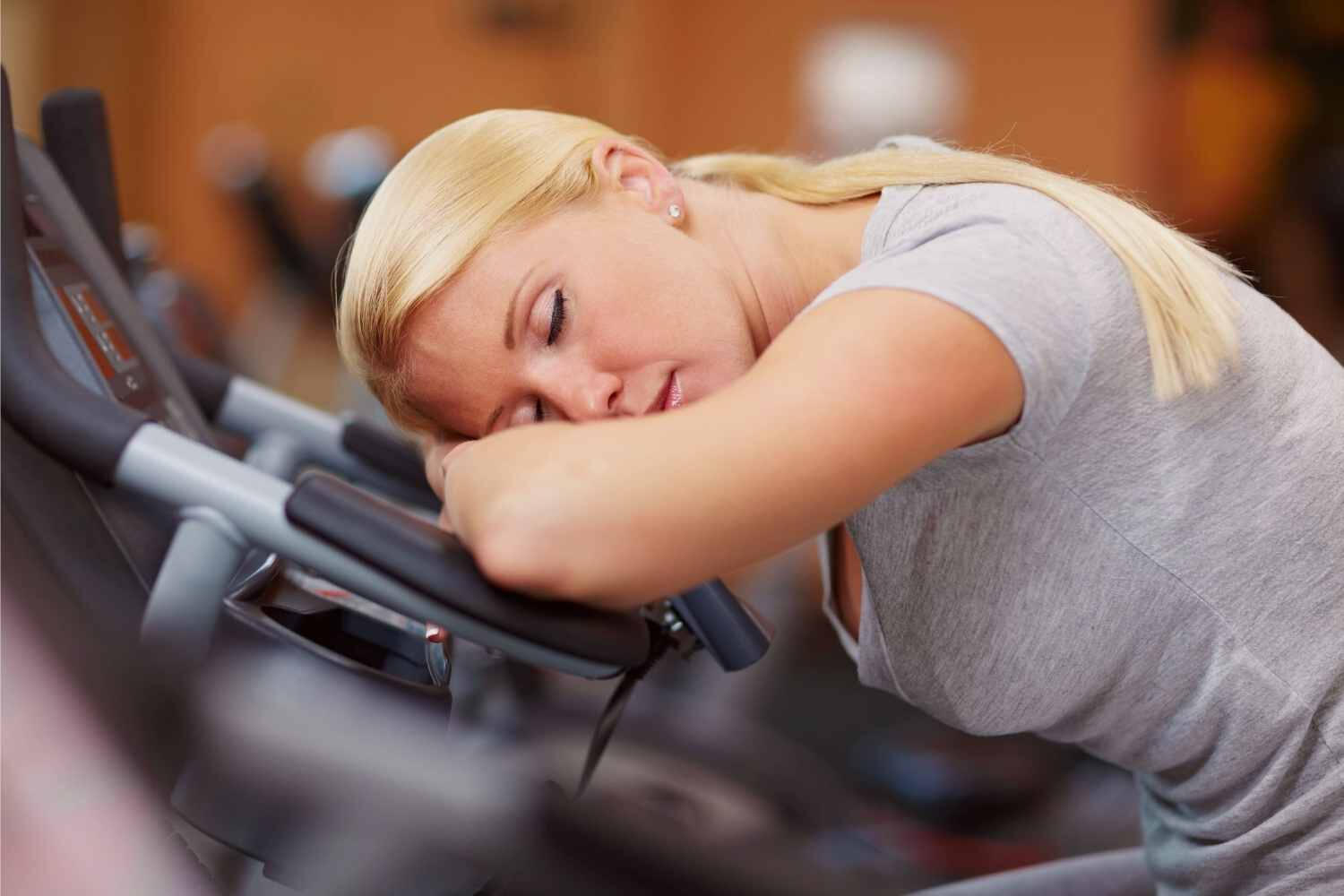
Sleep and exercise go hand in hand. While we often focus on training hard, eating well, and staying consistent, one critical factor tends to get overlooked: quality sleep. Whether you’re training to build muscle, lose weight, or improve mental well-being, your performance and recovery depend heavily on how well you rest.Let’s explore how sleep impacts exercise—and vice versa, plus practical tips to improve both.
Sleep Helps You Recover Faster
After a tough workout, your body shifts into repair mode—and that process kicks into high gear while you sleep. During deep sleep, growth hormone is released, which supports:
• Muscle repair
• Tissue growth
• Immune system recovery
• Mental rejuvenation
If you're not sleeping well, your body can’t fully recover, leading to stalled progress, increased fatigue, and a higher risk of injury.
Exercise Can Improve Sleep Quality
Fortunately, the relationship is two-way: just as sleep benefits exercise, regular physical activity improves sleep by:
• Helping you fall asleep faster
• Increasing time in deep, restorative sleep
• Reducing stress, anxiety, and depression
A consistent fitness routine can be a natural remedy for insomnia and poor sleep quality—especially when combined with good sleep hygiene habits.
Sleep Position and Muscle Imbalances
Here’s something you probably haven’t considered: the way you sleep might be affecting your movement patterns in the gym.
If you or your clients have knees that cave in during an overhead squat, this could indicate weak or underactive glutes. Now, pair that with a common habit—sleeping on your side, especially always on the same side. This position can lead to hip misalignment over time, stretching certain muscles while tightening others.
Pro tip: If you sleep on your side, place a pillow between your knees to keep your hips neutral. It might not be perfect all night, but even small changes can reduce chronic tension.
What You Eat Before Bed Also Matters
To maximize muscle repair while you sleep, protein timing is key. A slow-digesting protein like casein (found in dairy, meat, or nuts) before bed can help maintain a steady flow of amino acids through the night, supporting:
• Overnight muscle protein synthesis
• Better recovery
• Reduced DOMS (delayed onset muscle soreness)
On the flip side, fast-digesting proteins like whey are ideal right before or after workouts, especially to counteract the catabolic effects of cortisol.
Sleep Apnea: The Hidden Barrier to Progress
Sleep apnea is a serious condition that causes shallow or paused breathing during sleep. This results in disrupted sleep cycles and chronic fatigue. Most people aren’t even aware they have it—often, it’s the bed partner who notices first due to loud snoring or choking sounds.
Risk factors for sleep apnea include:
• Excess weight
• High blood pressure
• Metabolic syndrome
• Type 2 diabetes
• Cardiovascular issues
Lifestyle changes, particularly weight loss through proper nutrition and consistent physical activity, can help manage—and sometimes reverse—mild sleep apnea symptoms.
Sleep and Weight Loss: The Hormonal Connection
Not sleeping enough? That could be sabotaging your weight loss goals.
When you’re sleep-deprived, your appetite hormones go out of balance:
• Leptin (which suppresses hunger) goes down
• Ghrelin (which increases hunger) goes up
This leads to more cravings, bigger portions, and a tendency to reach for sugary or high-calorie foods. Add in the reduced motivation to work out, and you’ve got a recipe for stalled progress.
Quick Tips to Optimize Sleep & Exercise
• Stick to a consistent sleep schedule – even on weekends
• Cut off caffeine at least 6 hours before bedtime
• Wind down with a nighttime routine – light stretching, no screens
• Eat protein-rich meals throughout the day, including pre-bed
• Address sleep issues early – especially snoring or chronic fatigue
• Incorporate resistance training and moderate cardio for improved sleep quality
Final Thought
Sleep isn’t just a passive activity—it’s your body’s built-in recovery system, and it plays a central role in fitness success. If you’re working hard in the gym and eating clean but still struggling with progress, poor sleep could be the missing link.
Train hard, eat smart, sleep deep.
*Based on resources from NASM and ACSM | For educational purposes only | Not affiliated with or endorsed by either organization.
Projectgrit.fit © 2025 | All rights reserved
Caffeine and Exercise: Performance Benefits and Smart Use
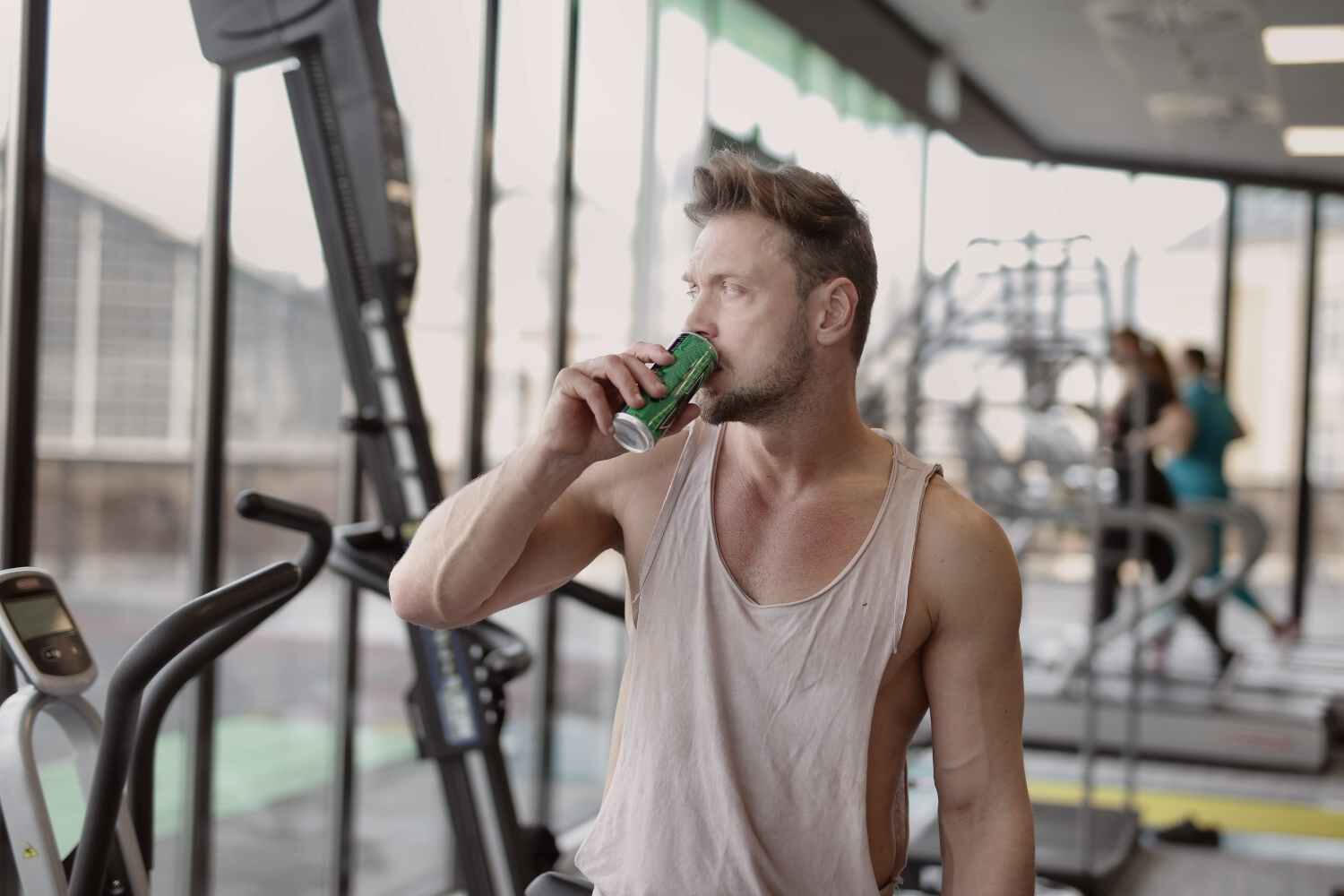
Caffeine is more than just a morning pick-me-up. Found in coffee, tea, chocolate, sodas, and many supplements, this natural stimulant affects the brain, muscles, and heart — and plays a bigger role in athletic performance than many people realize.
Whether you’re a fitness coach, a competitive athlete, or just curious about your daily cup of coffee, understanding how caffeine works can help you get the most from your training — without going overboard.
Caffeine and Your Body: What Happens After You Drink It
Once consumed, caffeine is absorbed through the gut and enters the bloodstream within 15 to 45 minutes. It reaches peak levels after about an hour and easily crosses into the brain and muscle cells, where it can influence focus, energy, and even fat metabolism.
Caffeine helps:
• Increase alertness and reaction speed
• Boost mood and motivation
• Improve endurance by sparing muscle glycogen
• Enhance fat oxidation
• Support better glycogen recovery when paired with carbs after training
However, too much caffeine can lead to headaches, restlessness, sleep problems, or anxiety — especially in people sensitive to it or those with certain health conditions.
Caffeine’s Impact on Athletic Performance
Research suggests that caffeine can enhance:
• Endurance: By reducing perceived effort and fatigue, it helps athletes train longer.
• Skill and accuracy: Some studies report a 10% improvement in performance tasks like ball-passing in field sports.
• Resistance training: Caffeine taken before strength workouts has been shown to boost total reps and reduce post-workout soreness.
• High-intensity activity: There may be benefits for sprinting and explosive sports, though the evidence here is mixed.
Interestingly, some studies suggest caffeine may reduce delayed-onset muscle soreness (DOMS), which could mean faster recovery and more frequent training sessions.
How Much Caffeine Do You Need?
For performance enhancement, the effective dose is about 3 to 6 mg per kg of body weight. That’s roughly 200–400 mg for a 150-pound (68 kg) person.
Caffeine Content in Common Items
• Coffee (8 oz): 95–200 mg
• Espresso (1 oz): 40–75 mg
• Black tea (8 oz): 14–61 mg
• Green tea (8 oz): 24–40 mg
• Cola (12 oz): 30–47 mg
• Dark chocolate (1 oz): ~25 mg
Caffeine from supplements (like caffeine anhydrous) offers a more precise dosage, which can be helpful for athletes monitoring their intake.
Caffeine Timing and Duration of Effects
The stimulating effects of caffeine begin within the hour and can last for 3–6 hours. For caffeine-naïve individuals (those who don’t consume it regularly), the benefits may last even longer.
One study found that non-habitual users experienced improved endurance up to 6 hours after ingestion — more than regular users, who cleared it from their system more quickly.
Tip: Experiment with caffeine during training — not on competition day — to understand how your body responds.
What Athletes Think — and What They Need to Know
In a survey of Ironman triathletes:
• 73% believed caffeine improved their performance
• But over half didn’t know the right amount to take
Most athletes rely on coaches, peers, or online research for caffeine advice — which shows the need for clear, science-based education on proper usage.
Cautions and Considerations
Caffeine is generally safe for healthy individuals in moderate amounts. However, athletes with the following conditions should be cautious or avoid caffeine:
• High blood pressure
• Anxiety disorders
• Heart conditions
• Insomnia or sleep difficulties
• Pregnancy
Also, caffeine can interact with certain medications, so it’s best to consult a healthcare provider before using it as a supplement.
Final Thoughts
Caffeine can be a powerful performance aid — when used correctly. The key is understanding the right dose, timing, and individual tolerance. Like any tool, it works best when tailored to your personal needs and training goals.
Whether you're preparing for a competition or looking to push a little harder in training, caffeine might just give you the edge — as long as it’s used smartly.
*Based on resources from NASM and ACSM | For educational purposes only | Not affiliated with or endorsed by either organization.
Projectgrit.fit © 2025 | All rights reserved
Gluten-Free: Health Trend or Medical Must-Have?

In today’s world of labels — fat-free, sugar-free, and now gluten-free — it’s no surprise that more clients are asking about whether cutting gluten is right for them. Some swear by how going gluten-free changed their lives, while others are just curious if it's the next health upgrade.
Let’s break it down: what gluten actually is, who really needs to avoid it, and what challenges come with a gluten-free lifestyle.
What Is Gluten, Exactly?
Gluten is a protein naturally present in wheat, barley, and rye. Most people consume it daily without issues. However, a small group of individuals need to avoid it completely.
Oats, while technically gluten-free, are often cross-contaminated during processing. Unless labeled as certified gluten-free, oats might pose a risk to those who are highly sensitive. If you're avoiding gluten, you'll need to double-check brands, sourcing, and production methods.
Where Gluten Hides
Beyond obvious grains, gluten often shows up in disguised forms. Watch out for ingredients like:
• Brewer’s yeast
• Semolina
• Bulgar
• Malt
• Seitan
• Triticale
• Durum
• Kamut
• “Natural flavorings” or thickeners (in processed foods)
Even colorings and emulsifiers may contain gluten, so checking labels — and occasionally contacting the manufacturer — is key. Also, ingredient lists change over time, so staying updated is part of the process.
Is “Gluten-Free” a Regulated Term?
Not entirely. The FDA does not yet enforce a universal standard for gluten-free labeling across all food products. You might even see gluten-free tags on items that naturally never contained gluten — which can lead to confusion and marketing-driven choices.
So before you grab the item that seems healthier because it's labeled "gluten-free," take a pause. Just like “sugar-free” or “low-fat,” this label doesn’t automatically make a product better.
Who Actually Needs to Avoid Gluten?
For individuals with celiac disease, gluten avoidance isn’t optional — it’s critical. Celiac is an autoimmune disorder affecting between 1 in 100 to 1 in 500 people worldwide. When someone with celiac consumes gluten, their intestinal lining becomes inflamed, and over time, this can flatten the villi (tiny structures that absorb nutrients).
This damage causes nutrient deficiencies — especially iron, calcium, and vitamin D — which may lead to:
• Anemia
• Osteoporosis
• Poor physical performance
• Mood and cognitive challenges
The only current treatment for celiac disease is a strict, lifelong gluten-free diet.
What About Gluten Sensitivity?
This is where things get more complicated. Gluten sensitivity (or non-celiac gluten intolerance) doesn’t have an official medical classification yet. Still, many individuals who test negative for celiac report similar symptoms — bloating, fatigue, GI discomfort — and find relief by avoiding gluten.
While researchers continue to study the condition, many professionals take a practical approach: if cutting gluten improves your symptoms, it might be worth continuing — but ideally under guidance.
Here’s how NASM-CPT and registered dietitian Courtney Walberg puts it:
“Many people choose a gluten-free diet even without being allergic. Nutritionally, there’s no reason to avoid gluten unless you're sensitive. I recommend anyone with digestive symptoms get tested before committing to dietary restrictions.”
Should You Go Gluten-Free Without a Medical Need?
Probably not — unless guided by a dietitian or medical professional. Removing gluten isn’t harmful by itself, but it often leads to:
• Diet restrictions
• Higher grocery bills
• Lower compliance over time
Most processed foods contain gluten, and many “gluten-free” replacements are heavily processed as well. Instead, those who feel better on a gluten-free diet may simply be benefitting from cutting out overly processed, inflammation-causing foods — not gluten itself.
If you do go gluten-free, focus on real food:
Rice, quinoa, potatoes, cornmeal, fruits, vegetables, and nuts are naturally gluten-free and nutrient-rich.
If You Have Celiac Disease: Get Expert Help
For those diagnosed with celiac, working closely with a registered dietitian is essential. They’ll help:
• Ensure you’re meeting nutritional needs
• Spot hidden gluten in supplements, medications, or packaged foods
• Help navigate the diet for long-term success
Bottom Line
Unless there’s a medical reason, going gluten-free isn’t necessary for most people. But if you’re experiencing gut issues or discomfort, don’t self-diagnose — get tested. And if you do remove gluten, do it with a plan, not hype.
*Based on resources from NASM and ACSM | For educational purposes only | Not affiliated with or endorsed by either organization.
Projectgrit.fit © 2025 | All rights reserved
Dark Chocolate & Heart Health: What Science Really Says
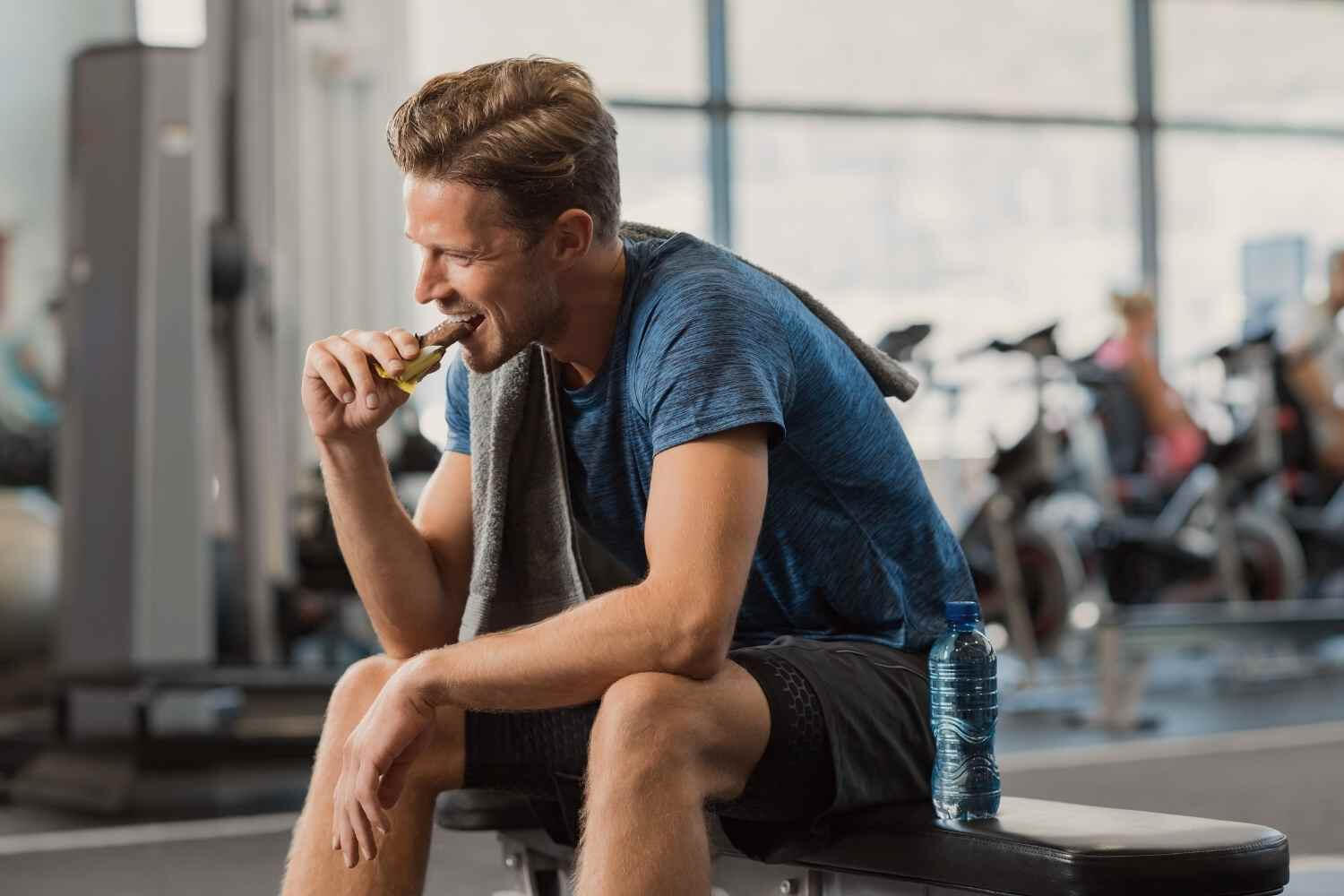
Can something so delicious actually be good for your heart? You’ve probably heard that dark chocolate is a “healthy indulgence,” especially when it comes to heart health—but is that true, or just marketing hype?
Let’s break down the science, the antioxidants, and the best ways to enjoy dark chocolate without going overboard.
What Makes Dark Chocolate Potentially Healthy?
Dark chocolate—made from the cocoa bean—is rich in a group of antioxidants called flavonoids, specifically flavonols. These natural compounds are found in many plant-based foods and play a protective role in plants, defending them from environmental stressors.
In humans, flavonols may help:
• Lower LDL (bad) cholesterol
• Improve blood flow
• Reduce inflammation
• Fight oxidative stress linked to aging and disease
These benefits are linked to a reduced risk of heart disease and possibly other chronic conditions.
What Are Antioxidants, Really?
Antioxidants help fight free radicals—unstable molecules created naturally in the body and from outside exposures (like pollution or smoking). When these free radicals build up, they can damage cells, contributing to aging, Alzheimer’s, cancer, and heart disease.
Dark chocolate contains antioxidant-rich polyphenols, a subgroup of which are flavonoids. These antioxidants are also found in foods like:
• Berries
• Green tea
• Nuts
• Beans
• Red wine
Fun Tip: Combine a square of dark chocolate with a spoonful of natural peanut butter for a heart-healthy, antioxidant-packed snack!
What Does the Research Say?
The buzz around dark chocolate isn't just based on rumors. Here are some findings from credible studies:
• Flavonoid-rich diets may lower cardiovascular risk, according to research involving over 2,000 people.
• Studies show high-flavanol cocoa products can improve vascular health and endothelial function (how well your blood vessels relax and contract).
• Some clinical trials show modest reductions in blood pressure and improvements in cholesterol profiles.
• Notably, many benefits occur when dark chocolate is part of a balanced, low-fat diet—not as a standalone solution.
• However, other studies show mixed results, with improvements in blood vessel function but no major changes in blood pressure or body composition.
Bottom Line: While promising, more long-term research is needed to fully understand the cardiovascular benefits of dark chocolate.
Not All Chocolate is Created Equal
Before you start eating chocolate like it’s a multivitamin, here’s the catch: Most commercial chocolate is heavily processed, which reduces its flavonoid content significantly. Sugar and milk are often added, which dilute the benefits.
Choose This:
• Dark chocolate with at least 70% cocoa content
• Minimal added sugar
• Fewer additives and milk solids
Avoid This:
• Milk chocolate (lower in flavonoids, higher in sugar)
• White chocolate (has little to no cocoa solids)
• Overprocessed candy bars marketed as “healthy”
How Much Dark Chocolate Should You Eat?
There’s no official “magic number,” but experts like the Cleveland Clinic suggest about 1 ounce (28 grams) of dark chocolate a few times per week. That’s about 1–2 small squares per serving.
Pair it with other flavonoid-rich foods like berries, apples, tea, and red wine (in moderation) to boost the overall antioxidant benefit of your diet.
Final Takeaway
Dark chocolate isn't a miracle food—but when it’s high in cocoa content and eaten in moderation, it can be a heart-smart choice. Rich in flavonols, it may support healthy blood flow, improve cholesterol levels, and offer powerful antioxidant effects.
If you're going to indulge, make it count with high-quality dark chocolate.
Just don't turn it into an excuse to overeat processed sweets in the name of health.
*Based on resources from NASM and ACSM | For educational purposes only | Not affiliated with or endorsed by either organization.
Projectgrit.fit © 2025 | All rights reserved
Calcium: The Underrated Powerhouse Behind Strong Bones, Muscles, and More

When we hear "calcium," most of us immediately think of strong bones and teeth—and for good reason. But calcium is so much more than that. It plays a key role in muscle contractions, nerve function, blood clotting, heart health, metabolism, and even weight management.
For athletes, fitness enthusiasts, and anyone pursuing a healthy lifestyle, understanding calcium’s importance can unlock better recovery, enhanced performance, and long-term well-being.
What Does Calcium Actually Do?
1. Builds and Maintains Strong Bones
Nearly 99% of the calcium in our body is stored in the bones and teeth. It’s essential for bone development, especially during childhood, adolescence, and early adulthood—when bone growth is at its peak.
By age 30, most people reach their peak bone mass. After that, bones naturally lose density over time, making calcium intake all the more crucial to prevent bone loss and fractures.
Low calcium intake over the years is one of the key contributors to osteoporosis, a condition where bones become weak and brittle. Women are at a particularly high risk post-menopause due to the drop in estrogen levels, but men are not exempt—especially those with low testosterone or poor diets.
Did you know? Physically active women who restrict their diets too much may develop the Female Athlete Triad—a dangerous cycle of disordered eating, irregular periods (amenorrhea), and osteoporosis.
2. Enables Muscle Function and Movement
Calcium is vital for muscle contraction, including the heartbeat. Here's how it works:
• It helps transmit nerve signals to the muscles.
• Inside muscle cells, calcium interacts with proteins like troponin and tropomyosin to trigger contractions.
• Without enough calcium, muscle function—including the heart muscle—can become compromised.
3. Supports Nerve Health
Calcium ions act like messengers that help nerves send signals to each other and to muscles. It's essential in neurotransmitter release, which is how your brain communicates with your body. That’s why calcium imbalances can lead to symptoms like numbness, muscle spasms, and confusion.
4. Helps Your Blood Clot
If you get injured, calcium steps in. It helps produce fibrin, a protein that forms a mesh-like structure over wounds to stop bleeding. Without calcium, your body’s natural clotting process wouldn’t work properly.
5. Regulates Blood Pressure, Heart Rhythm, and More
Beyond bones and muscles, calcium:
• Aids in blood pressure control
• Helps regulate heart rhythm
• Plays a part in immune function
• Supports fat metabolism and energy use
• Helps maintain fluid balance at the cellular level
In short, calcium is involved in almost every major system in your body.
How Much Calcium Do You Really Need?
| Age Group | Calcium Recommendation (mg/day) |
|---|---|
| Teenagers (14–18 years) | 1,300 mg |
| Adults (19–50 years) | 1,000 mg |
| Women over 50 / Men over 70 | 1,200 mg |
Important: Calcium absorption decreases with age, hormone changes, and vitamin D deficiency. So even if you’re eating enough calcium, your body might not be absorbing it efficiently.
Foods High in Calcium — And How Much Your Body Actually Absorbs
Here's the catch: Not all calcium-rich foods are equally absorbed by the body. Some foods may have a high calcium content but low bioavailability—meaning your body doesn't absorb much from them.
Let’s compare some common sources of calcium and how well they’re absorbed:
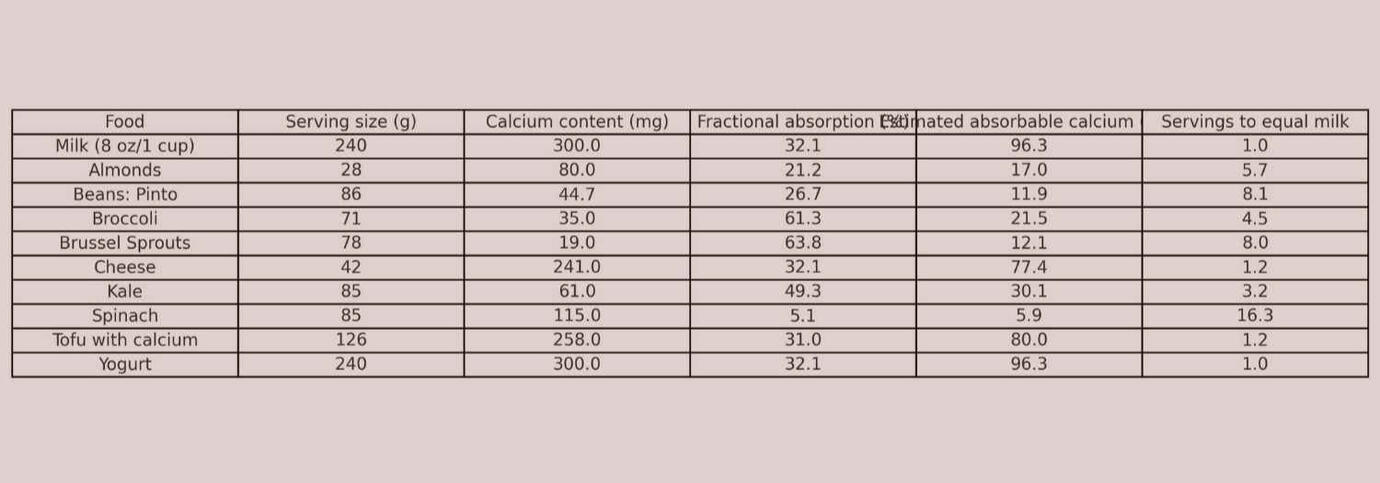
Key Takeaway: While plant-based options like kale and broccoli are good, you'd need multiple servings to match the calcium in one glass of milk or cup of yogurt.
Spinach, while rich in calcium, is bound with oxalates, which block absorption—making it a poor calcium source despite the numbers.
Pro Tips to Boost Calcium Absorption
• Get enough Vitamin D – This vitamin enhances calcium absorption in the gut.
• Spread your calcium intake throughout the day instead of taking it all in one meal.
• Avoid excessive caffeine or soda, which may interfere with calcium retention.
• Pair calcium with protein, as it may improve absorption in certain meals.
• Stay active – Weight-bearing exercise supports better bone retention.
Final Thoughts
Calcium isn't just for kids or older adults—it’s crucial throughout your entire life. Whether you're an athlete, coach, or just someone aiming for better health, consistently hitting your calcium intake helps with more than bone density—it supports your muscles, heart, brain, and metabolism.
If you're on a plant-based diet or avoiding dairy, be sure to include tofu, kale, almonds, fortified plant milks, and consider a calcium supplement if needed.
*Based on resources from NASM and ACSM | For educational purposes only | Not affiliated with or endorsed by either organization.
Projectgrit.fit © 2025 | All rights reserved
Strength & Power Training: A Game-Changer for Osteoarthritis Management
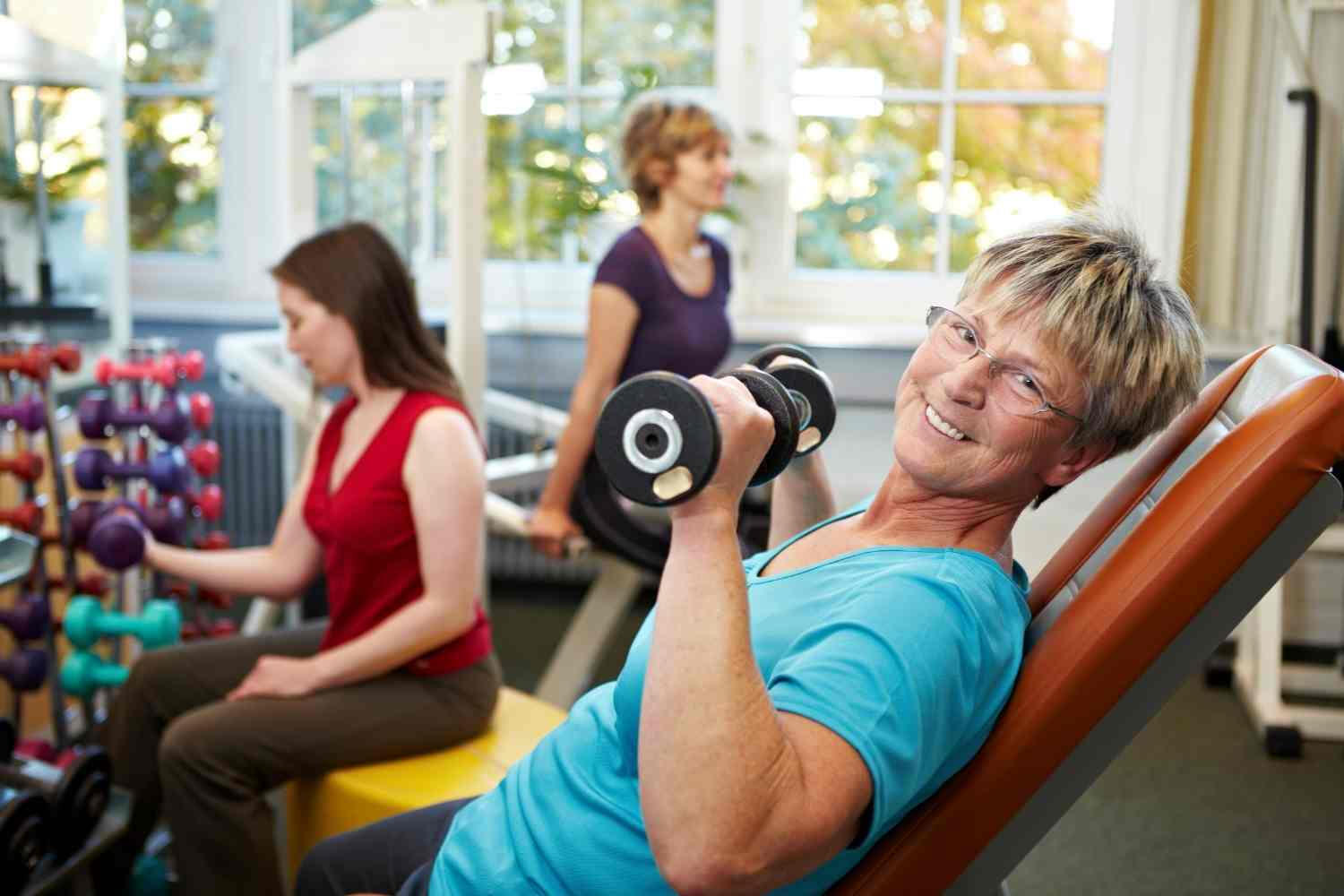
Osteoarthritis (OA) affects over half a billion people worldwide, making it the most widespread musculoskeletal condition today. It often leads to chronic pain and limited physical function, which can significantly reduce quality of life, especially in older adults. While aerobic activities like walking or swimming are commonly recommended, one crucial and often underutilized tool in managing OA is strength and power training.
Why Strength and Power Matter in OA
When we talk about strength training, we mean improving the muscle’s ability to exert force. Power training, on the other hand, focuses on how quickly that force can be produced — think of getting up from a chair or climbing stairs. Research shows that muscle power tends to decline faster than strength with age, especially in the legs. This decline is directly related to increased joint pain, reduced mobility, and a higher risk of falls.
The good news? Both strength and power training can reduce joint pain, boost mobility, and improve confidence in daily movements.
Benefits Backed by Science
Studies show that regular strength-focused workouts can:
• Increase muscle size and strength
• Delay the onset of OA
• Reduce joint pain and improve functional ability
• Lower risk factors for heart disease when combined with cardioPower training, even when done with basic equipment like weighted vests or water resistance in a pool, mimics real-life movements and improves joint function and quality of life.
How to Get Started Safely
According to the American College of Sports Medicine (ACSM) and leading arthritis research groups, a well-rounded OA exercise plan should include:
• Strength Training: At least two sessions per week, performing 2–3 sets of 8–12 reps targeting all major muscle groups.
• Start Light: Begin at 50–60% of your max strength and increase gradually.
• Consistency Over Intensity: Results are linked more to how often and how long you train, rather than how heavy or intense your workouts are.
• Minimum Commitment: At least 12 sessions are needed to see noticeable improvements in pain and function.
Tailored Approach for Every Lifestyle
No two individuals with OA are the same. Here’s how training can be adjusted:
• For Athletes: Someone with an active background can maintain cardio by reducing high-impact sessions and increasing strength/power work to stay joint-friendly.
• For Beginners: Those new to exercise may benefit from focusing on controlled strength and power exercises first, gradually reintroducing aerobic activities once pain is managed.
Be Mindful of Temporary Discomfort
Certain movements — especially high-impact or heavy eccentric (lengthening) actions — may cause temporary discomfort. In such cases, alternatives like pool workouts or adjusting the load and tempo can help maintain consistency without worsening symptoms.
A Team Effort: Trainers & Clinicians
Fitness professionals and healthcare providers both play essential roles in promoting strength and power training for OA. Whether the goal is prevention, management, or regaining confidence in movement, these training methods offer a powerful path to better health.
If you're managing osteoarthritis or want to take proactive steps for your joint health, consider adding a structured strength and power routine to your week. It’s never too late to start — and the benefits speak for themselves.
*Based on resources from NASM and ACSM | For educational purposes only | Not affiliated with or endorsed by either organization.
Projectgrit.fit © 2025 | All rights reserved
Why Eccentric-Overload Training Outperforms Traditional Strength Workouts
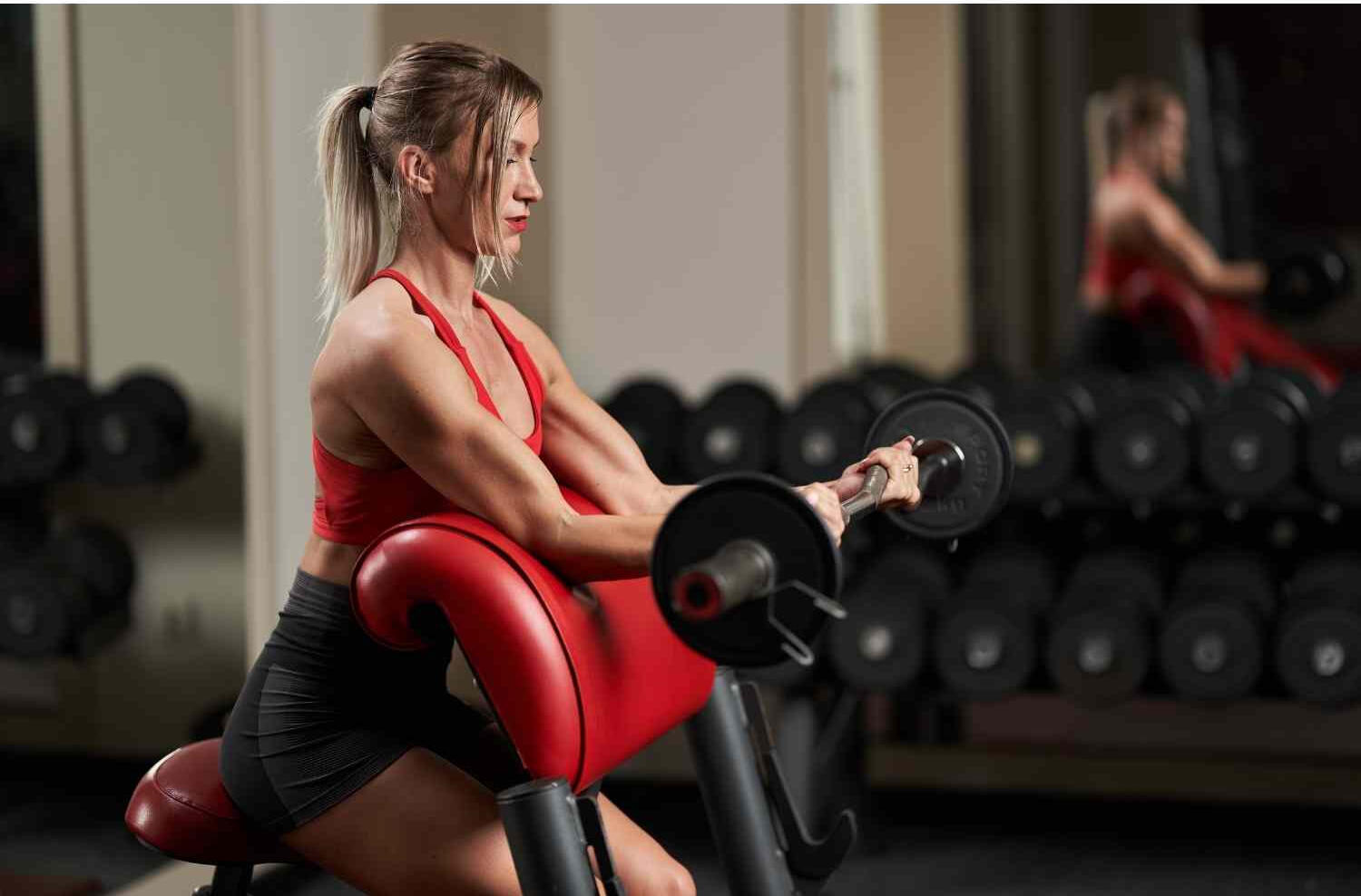
Why Resistance Training Matters
Resistance training is a core component of athletic performance, especially in sports where force and power are crucial for elite-level success. Traditional strength programs typically apply the same load during both the concentric (lifting) and eccentric (lowering) phases of a movement. However, scientific research suggests that this equal loading approach may not fully maximize muscular potential particularly during the eccentric phase.
Understanding the Eccentric Advantage
Skeletal muscles are capable of generating approximately 30% more force during eccentric contractions than during concentric ones. When using equal loads in both phases, this means the eccentric portion is underloaded relative to its true capacity. To address this imbalance, recent studies have explored eccentric only training where heavier loads are used exclusively in the eccentric phase. This method has shown to significantly improve both muscle strength and hypertrophy (growth).
Satellite Cells: The Muscle’s Repair System
One powerful benefit of eccentric training is that it activates satellite cells these are special stem cells in your muscles that help with muscle growth, repair, and recovery.In lab studies, just one session of intense eccentric exercise (around 200–300 reps) has shown a strong response from these cells. But it’s important to know that this type of high-volume training isn’t usually part of a typical workout plan. Also, eccentric-only exercises often don’t involve the natural stretch and rebound motion (called the stretch-shortening cycle), which makes them less effective for sports or real-life movements.
The Shift Toward Eccentric-Overload Resistance Training
What Is Eccentric-Overload Training?
Eccentric-overload resistance training involves paired concentric and eccentric actions, closely mimicking natural human movement. This method maintains the body’s natural mechanics while incorporating higher loads during the eccentric phase.
This approach is easier to integrate into regular training routines compared to eccentric-only training, and studies show it may be more effective than traditional methods in promoting muscle growth and improving performance, particularly by targeting fast-twitch (type II) muscle fibers.
How It Works in Practice
Eccentric-overload training can be implemented using isokinetic training devices, which control load via movement speed. For example:
• In leg extensions, concentric movements may occur at 60°/sec, while eccentric movements increase to 180°/sec.
• In leg presses, the plate might move away from the athlete at 100 mm/sec concentrically, and return at 400 mm/sec eccentrically.
Athletes are encouraged to exert maximum force during both phases, leading to a naturally higher eccentric load (around 30% more than the concentric load).
Research Findings: Eccentric-Overload Boosts Satellite Cell Activity
A randomized controlled study published in Medicine & Science in Sports & Exercise® (March 2022) investigated the muscle response to eccentric-overload training. Recreational athletes who performed a single session of eccentric-overload leg extensions showed:
• A significant increase in satellite cell content one week post-exercise.
• A rise in satellite cells associated with type II muscle fibers.
• Greater activation of satellite cells compared to traditional resistance training or a non-training control group.
These findings suggest ongoing muscle repair and potential for faster muscle adaptation especially in muscle types responsible for power and explosive movements.
Conclusion: Eccentric-Overload as a Game-Changer
The use of accentuated eccentric loading offers promising benefits for strength development, muscle hypertrophy, and fast-twitch muscle fiber recruitment. While more research is needed to uncover the full mechanisms, especially regarding satellite cell dynamics, early evidence strongly supports the integration of eccentric-overload methods into athletic training programs.If your goal is to push past plateaus and tap into your body's untapped strength potential, eccentric-overload training may be the edge you're looking for.
*Based on resources from NASM and ACSM | For educational purposes only | Not affiliated with or endorsed by either organization.
Projectgrit.fit © 2025 | All rights reserved
Understanding the Kinetic Chain and Its Role in Functional Fitness
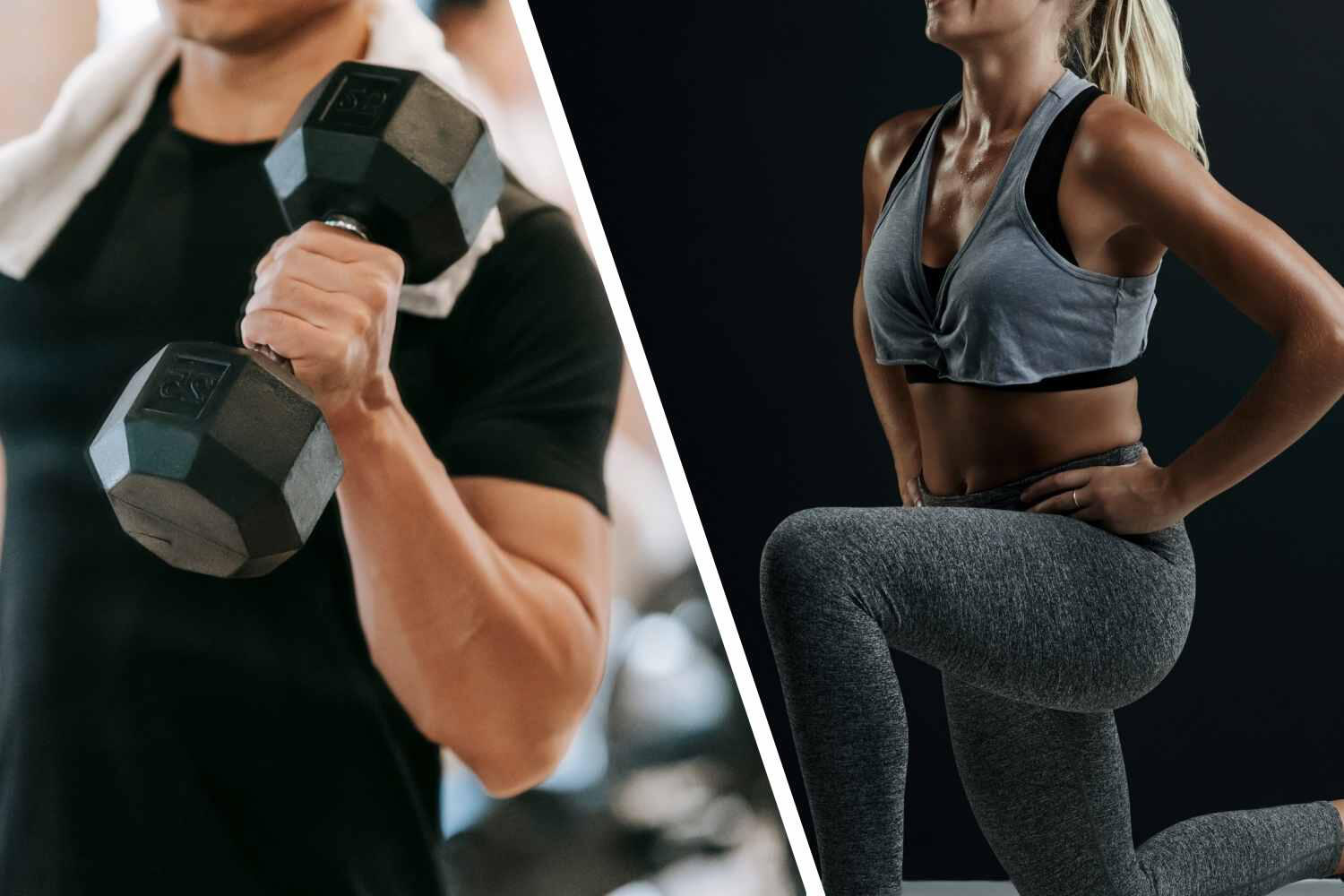
The human body doesn’t work in isolated parts it’s a complex, interconnected system where every joint, muscle, and ligament influences the others. This concept, known as the kinetic chain, helps explain how movement travels through the body and how imbalances in one area can lead to dysfunction or injury elsewhere.In this article, we’ll break down what the kinetic chain is, why it matters in training and recovery, and how you can use it to design safer, smarter, and more effective workouts.
What is the Kinetic Chain?
The kinetic chain refers to how our body’s segments and joints are linked together and influence each other during movement. Originally a concept from mechanical engineering, it was adapted to human movement science in the mid-20th century. The idea is simple but powerful: movement in one area affects the entire chain.For example, poor ankle mobility might lead to compensations in the knees or hips. Likewise, tight hip flexors can trigger lower back pain. Understanding these connections is crucial for preventing injury and improving performance.
Why Your Body Functions as One Unit
The kinetic chain theory emphasizes that force and motion don’t stay local they travel from one body part to another. Whether you’re lifting, running, or simply walking, your body works as an integrated system. Training with this in mind leads to more balanced programs and healthier, more resilient movement patterns.You’ve likely experienced this: someone complains of shoulder discomfort, but the root cause turns out to be poor core or hip stability. That’s the kinetic chain in action.
Upper vs. Lower Kinetic ChainThe kinetic chain is typically broken down into two main sections:
• Upper Kinetic Chain: Includes the fingers, wrists, elbows, arms, shoulders, and upper spine. It’s involved in pushing, pulling, and overhead movements.
• Lower Kinetic Chain: Involves the toes, feet, ankles, knees, hips, and pelvis playing a big role in locomotion, stability, and foundational strength.Training both sections in harmony is key to full-body performance and injury prevention.
Open vs. Closed Kinetic Chain MovementsMovements are also classified as open or closed kinetic chain exercises, each with unique benefits:
Open Kinetic Chain Exercises
These exercises allow the limbs to move freely, typically focusing on isolating specific muscle groups.Examples:
• Leg extensions
• Seated leg curls
• Bicep curlsBenefits:
• Great for muscle isolation
• Useful in rehab to target weak areas
• Helps improve joint mobility and range of motion
Closed Kinetic Chain Exercises
In these movements, the extremity (hand or foot) remains in contact with a fixed surface like the floor or wall.Examples:
• Squats
• Push-ups
• LungesBenefits:
• Improves coordination and balance
• Trains multiple muscle groups at once
• Enhances joint stability
• Ideal for functional and athletic trainingCombining both types of exercises creates a well-rounded program that develops strength, stability, and control.
Getting Started: Smart Application of the Kinetic Chain
Here’s how to apply this concept effectively in your training or programming:• Begin with a mix of open and closed chain exercises
• Prioritize form and control before intensity
• Use open chain movements to correct imbalances or target specific muscles
• Incorporate closed chain exercises for total-body strength and stability
• Adapt the ratio of open- and closed-chain exercises based on your needs, goals, and abilities.
Final Thoughts
The kinetic chain isn’t just a concept it’s the foundation of how our bodies move. Recognizing and respecting this interconnected system allows you to build programs that are not only more effective but also safer and more sustainable.By integrating both open and closed chain movements, focusing on alignment and movement quality, and personalizing workouts to each body’s needs, you’re not just training muscles you’re training movement.
*Based on resources from NASM and ACSM | For educational purposes only | Not affiliated with or endorsed by either organization.
Projectgrit.fit © 2025 | All rights reserved
The Hidden Dangers of Sleep Deprivation: Why Quality Rest is Essential

Our Culture’s Sleep CrisisIn today’s fast-paced world, overworking and under-recovering have become the norm. From busy professionals to elite athletes, we’ve been conditioned to believe that productivity matters more than sleep. A study by Magee et al. (2009) found that insufficient sleep was most strongly associated with long working hours, based on data from over 49,000 adults.But sleep deprivation isn’t just a minor inconvenience it’s a growing global health crisis.
What Exactly Is Sleep Deprivation?
Sleep deprivation occurs when a person doesn’t get enough quality sleep to support normal bodily functions. It can stem from poor bedtime routines, insomnia, sleep apnea, stress, or medical conditions. According to research, 50–70 million Americans experience some degree of sleep deprivation (Papatriantafyllou et al., 2022).Sleep needs vary with age:
• Infants: Up to 20 hours per day
• Teens: ~9–9.5 hours
• Adults: 7–9 hours
• Seniors: 7–8 hoursAs we age, we spend more time in lighter sleep, leading to frequent nighttime awakenings (Hanson & Huecker, 2020).
The Health Fallout of Too Little SleepWe often prioritize work, workouts, and responsibilities over rest but sleep is vital for our health and fitness. Let’s break down what really happens when we don’t get enough shut-eye.
1. Sleep and Appetite: A Weight Gain Trap
A small study (Calvin et al., 2013) revealed that people who were sleep-deprived consumed 559 more calories per day than well-rested participants. The extra intake wasn’t matched by greater energy expenditure, suggesting that sleep loss may lead to unintentional overeating and weight gain.
2. Metabolic Chaos
Sleep deprivation can raise cortisol levels - a stress hormone that promotes muscle breakdown and fat storage. It also reduces insulin sensitivity, increasing the risk of diabetes.In a study on military personnel, those who skipped a night of sleep had higher cortisol levels and worse mental health scores (Song et al., 2015).
3. Reduced Effectiveness of a Calorie Deficit
Even with diet and exercise, sleep loss can sabotage fat loss. Nedeltcheva et al. (2010) found that sleep-deprived dieters:
• Lost 55% less weight
• Lost 60% more muscle massThis underscores the critical role sleep plays in body composition goals.
4. Cardiovascular & Immune System Damage
Sleep deprivation activates the body’s stress response and increases inflammation. It’s linked to:
• High blood pressure
• High cholesterol
• Diabetes
• Increased risk of heart attack (by up to 20%)
• Weakened immune function
• Higher risk of infections and even cancer
5. Athletic Performance Takes a Hit
For athletes, sleep is a non-negotiable recovery tool. Lack of sleep impairs:
• Muscle and tissue repair
• Strength gains
• Focus and coordinationEven a single night of poor sleep can decrease athletic output and increase injury risk (Hamlin et al., 2021).
How to Improve Your Sleep Hygiene
Small changes in behavior and environment can lead to better sleep:1. Stick to a schedule: Go to bed and wake up at the same time daily, including weekends.2. Ditch caffeine by noon: Caffeine can disrupt sleep even hours after consumption.3. Avoid screens before bed: The blue light from devices hinders melatonin production, making it harder to fall asleep.4. Keep it cool: Aim for a bedroom temperature around 65°F (18°C).5. Skip alcohol & heavy carbs: Both can disrupt sleep cycles and cause nighttime awakenings.6. Use sleep trackers: Devices like Whoop or Oura can help track your sleep quality and keep you accountable.
Summary
You can’t out-train or out-diet bad sleep. Just like exercise and nutrition, sleep is a cornerstone of good health. Prioritizing rest not only improves how you feel but can also supercharge your physical results.Start making small changes today and reclaim the benefits of restorative, high-quality sleep.
*Based on resources from NASM and ACSM | For educational purposes only | Not affiliated with or endorsed by either organization.
Projectgrit.fit © 2025 | All rights reserved













